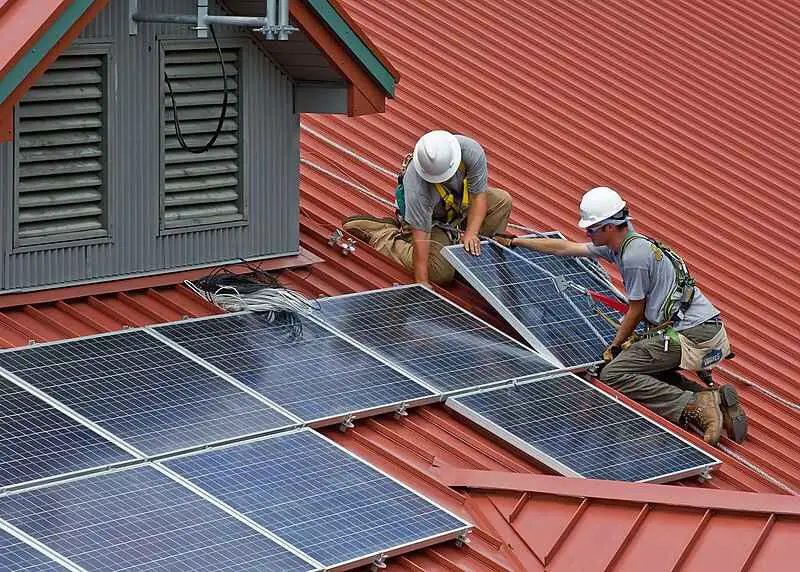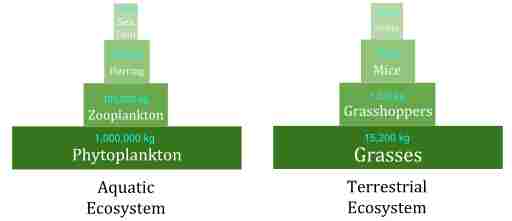5 Disadvantages of Solar Energy Explained
Disadvantages of solar energy are; capital cost, panel-manufacturing environmental impacts, installation challenges, space intensiveness, and weather dependence.
This article discusses the disadvantages of solar energy, as follows;
1). Capital Cost (as one of the Disadvantages of Solar Energy)
The cost of solar energy is high at the stage of initial investment, especially for solar systems that comprise of multiple components and/or which have a significant level of complexity.
Average Capital expenditure (CAPEX) of solar systems is around $16,000 in the United States as of 2023 [1]. Factors that may affect the exact capital cost value include geographic location, type and size of solar panels, auxiliary components like inverters and batteries, and nature of installation.
At the minimum, solar systems can be purchased at around $1.27 per Watt [3].
It is however important to acknowledge that solar energy is fairly cheap when it is evaluated on a comparative basis, even with respect to other renewable energy systems like offshore and onshore wind turbines [5]. The cost challenge is mostly present at the initial investment stage, and especially affects small-scale private purchasers.
Because the supply of solar energy to generate electricity is not consistent, it is generally needful to install solar panels or shingles along with energy storage and management systems, which further increase capital costs.
2). Space Intensiveness
Energy resources that take up the most space include hydro, wind, solar and biomass.
Solar energy takes a lot of space because of the need for significant areal coverage, to capture and convert sufficient amounts of solar radiation, to electricity.
Efficient solar panels produce between 10 and 20 watts of power per square foot. This means that a solar installation for over 100 watts requires significant space.
The space-intensiveness of solar energy has negative economic, social and environmental implications, because the area occupied by solar components could be used for other beneficial purposes, and may be deprived of important physicochemical elements like air and light, due to obstruction by these components.
Efforts to address the issue of space requirements for solar systems have led to innovative concepts like agrivoltaics; which effectively combines solar energy-capture with sustainable farming [2].
Solar energy technology is also considered good for space-based installation, which replaces the Earth-based systems with solar satellites that have access to more solar energy with less weather-related interruption [7]. Such systems are described as Space-based Solar Power (SBSP) systems.

3). Panel-Manufacturing Environmental Impacts (as one of the Disadvantages of Solar Energy)
While solar energy itself is a clean and renewable resource, the manufacture of solar panels is not an environment-friendly process [6].
The negative environmental impacts of making solar panels include water consumption, soil and water pollution, air pollution, and greenhouse gas emission.
Solar energy's role in environmental degradation is most active during manufacture and disposal of solar panels, batteries, electric cables, and other components of solar systems. While several efforts have been made to boost solar's sustainability through substitution of alternative raw materials and recycling, it is barely feasible to bring the environmental impact down to zero.
The carbon footprint of solar panel manufacturing is significant, and comes from the use of fossil fuels to supply energy during the mining, processing and fabrication process.
Before the advent of innovative concepts like thin-film design and organic solar cells, solar panel manufacturing required minerals like silica, as well as metallic ores for framing, which imposed the risk of resource depletion as well as mining-related pollution, on the ecosystem.
4). Installation Challenges
Another disadvantage of solar energy is the challenges involved in the solar panel installation process.
The main challenge of solar system installation is related to the suitability and compatibility of system components.
These may occur in the form of unsuitable panel size with respect to the roof or raft for mounting, mismatched panel array, damage during conveyance, connectivity problems, and rainwater flow obstruction.
Problems of solar system installation can further increase costs and add to complexity of both operation and maintenance.

5). Weather Dependence (as one of the Disadvantages of Solar Energy)
Solar energy depends on the availability of sufficient solar radiation, which is within the areal coverage of a solar panel or concentrator. This implies that solar energy depends on weather conditions, because they determine the intensity of solar radiation in any given place.
The dependence of solar system performance on weather conditions, is one of the biggest and most prominent disadvantages of solar energy as an alternative to fossil fuels; because it reduces the consistency and reliability of power supply.
Solar energy depends on temperature, which may degrade panel performance when excessively high for prolonged periods. Other weather parameters affecting solar energy conversion are; air pressure, outdoor temperature, wind speed and humidity [4].
While solar panels work on cloudy days, their output under such weather conditions is much less than optimal. Excessive winds may also cause air pollution, dust and atmospheric clouding, while posing the threat of mechanical damage to solar systems.
The best conditions for solar panels comprise of unobstructed, intense, non-diffuse radiation; optimal temperature not exceeding 25°C, low to moderate humidity, and slow wind speeds.
Conclusion
Disadvantages of solar energy are;
1. Capital Cost
2. Space Intensiveness
3. Panel-Manufacturing Environmental Impacts
4. Installation Challenges
5. Weather Dependence
References
1). Brill, R. (2023). "How Much Do Solar Panels Cost?" Available at: https://www.forbes.com/home-improvement/solar/cost-of-solar-panels/. (Accessed 27 March 2023).
2). Dupraz, C.; Marrou, H.; Talbot, G.; Dufour, L.; Nogier, A.; Ferard, Y. (2011). "Combining solar photovoltaic panels and food crops for optimising land use: Towards new agrivoltaic schemes." Renewable Energy 36(10):2725-2732. Available at: https://doi.org/10.1016/j.renene.2011.03.005. (Accessed 27 March 2023).
3). Rahman, M.; Islam, A. K. M. S.; Salehin, S.; Al Matin, A. (2016). "Development of a Model for Techno-economic Assessment of a Stand-alone Off-grid Solar Photovoltaic System in Bangladesh." International Journal of Renewable Energy Research 6(1):1453-1461. Available at: https://www.researchgate.net/publication/291973733_Development_of_a_Model_for_Techno-economic_Assessment_of_a_Stand-alone_Off-grid_Solar_Photovoltaic_System_in_Bangladesh. (Accessed 27 March 2023).
4). Saglam, S. (2010). "Meteorological parameters effects on solar energy power generation." WSEAS Transactions on Circuits and Systems 9(10). Available at: https://www.researchgate.net/publication/228896495_Meteorological_parameters_effects_on_solar_energy_power_generation. (Accessed 27 March 2023).
5). Steffen, B. (2019). "Estimating the Cost of Capital for Renewable Energy Projects." Energy Economics, Elsevier, vol. 88(C). Available at: https://ssrn.com/abstract=3373905, http://dx.doi.org/10.2139/ssrn.3373905. (Accessed 27 March 2023).
6). Tawalbeh, M.; Al-Othman, A.; Kafiah, F.; Abdelsalam, E.; Almomani, F.; Alkasrawi, M. (2021). "Environmental impacts of solar photovoltaic systems: A critical review of recent progress and future outlook." Sci Total Environ. 2021 Mar 10;759:143528. Available at: https://doi.org/10.1016/j.scitotenv.2020.143528. (Accessed 27 March 2023).
7). Woollacott, E. (2022). "How solar farms in space might beam electricity to Earth." Available at: https://www.bbc.com/news/business-62636746. (Accessed 27 March 2023).




